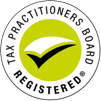In this issue:
Claiming mobile phone, internet & home phone expenses
Get your house in order
Five most overlooked tax deductions
Claiming Mobile Phone, Internet And Home Phone Expenses
The ATO has issued guidance on making claims for mobile phone use as well as home phone and internet expenses.
It says that if you use any of these for work purposes, you may be able to claim a deduction if there are records to support your claims. But the ATO points out that use for both work and private use will require you working out the percentage that “reasonably relates” to your work use.
Substantiating claims
The ATO requires that you keep records for a four-week representative period in each income year to claim a deduction of more than $50. These records can include diary entries, including electronic records, and bills. “Evidence that your employer expects you to work at home or make some work-related calls will also help you demonstrate that you are entitled to a deduction,” it says.
When you can’t claim a deduction for your phone
Of course if your employer provides you with a phone for work use and also pays for usage (phone calls, text messages, data) then you are not able to claim a deduction. Similarly, if you pay for usage but are subsequently reimbursed by your employer, you are not able to claim a deduction.
How to apportion work use of your phone
As there are many different types of plans available, you will need to determine your work use using a reasonable basis.
Incidental use
If your work use is incidental and you are not claiming a deduction of more than $50 in total, you may make a claim based on the following, without having to analyse your bills:
- $0.25 for work calls made from your landline
- $0.75 for work calls made from your mobile
- $0.10 for text messages sent from your mobile.
Usage is itemised on your bills
If you have a phone plan where you receive an itemised bill, you need to determine your percentage of work use over a four-week representative period, which can then be applied to the full year.
You need to work out the percentage using a reasonable basis. This could include:
- the number of work calls made as a percentage of total calls
- the amount of time spent on work calls as a percentage of your total calls
- the amount of data downloaded for work purposes as a percentage of your total downloads.
Usage is not itemised on your bills
If you have a phone plan where you don’t receive an itemised bill, you can determine your work use by keeping a record of all your calls over a four-week representative period and then calculate your claim using a reasonable basis.
The ATO uses an example to further explain this.
Ahmed has a prepaid mobile phone plan that costs him $50 a month. He does not receive a monthly bill so he keeps a record of his calls for a four-week representative period. During this four-week period Ahmed makes 25 work calls and 75 private calls. He worked for 11 months during the income year, having had one month of leave. He therefore calculates his work use as 25% (25 work calls out of 100 total calls). He claims a deduction of $138 in his tax return (25% x $50 x 11 months).
Bundled phone and internet plans
Nowadays phone and internet services are often bundled together. The ATO says that when you are claiming deductions for work-related use of one or more services, you need to apportion your costs based on your work use for each service. “If other members in your household also use the services, you need to take into account their use in your calculation.”
If you have a bundled plan, you need to identify your work use for each service over a four-week representative period during the income year. This will allow you to determine your pattern of work use, which can then be applied to the full year.
A reasonable basis to work out your work related use could include:
Internet:
- the amount of data downloaded for work as a percentage of the total data downloaded by all members of your household
- any additional costs incurred as a result of your work-related use – for example, if your work-related use results in you exceeding your monthly cap.
Phone:
- the number of work calls made as a percentage of total calls
- the amount of time spent on work calls as a percentage of your total calls
- any additional costs incurred as a result of your work-related calls – for example, if your work-related use results in you exceeding your monthly cap.
Get Your House In Order
Now that the budget and end of financial year are out of the way, it’s a great time to start planning for 2016/17. Remember tax planning for 2016/17 starts on 1 July 2016. After recent announcements, super remains a low-tax saving environment designed to fund your retirement and this is your opportunity to make the most of it.
- Do a “lost super search. With more than $17 billion in lost super, there’s a chance that a few of those dollars might be yours. Search the internet for “supersekker” and it will take you to the tax office’s super search tool. You will just need to enter your name, tax file number and date of birth in the search bars and you’re set.
- Consolidate your funds. Dig up your past statements and make sure you’ve undertaken step 1. Also use this opportunity to consolidate your funds into one to make life simple. Just check you’re not missing out on any any insurances or other benefits before you close the accounts. Rolling over existing accounts into one account is a simple process.
- Salary sacrifice. Another term for a salary sacrifice contribution is concessional contribution. It is subject to 15% tax unless you earn over $300,000 (including super contributions) and you will pay 30% tax. (It is also subject to an annual cap, which is likely to shrink in a year’s time). Either way, it’s likely to be substantially less tax than you would pay in your individual name and the contribution will help reduce your tax bill and boost your super balance.
- Non-concessional contribution. This is a tax free or after-tax contribution to super and it’s now subject to a lifetime limit of $500,000 (changed in the budget from $180,000 a year). If you’ve sold an asset, received an inheritance or had a bonus from work, then a non-concessional contribution might be worth making.
- Co-contribution. If you earn less than $35,454 and make a non-concessional contribution of $1000, the government will give you $500. That’s a guaranteed 50% return on your money! And if you earn $35,454 to $50,454, you will receive part of the $500. It’s a no brainer!
- Spouse contribution. If your spouse earns less than $10,800 and you make a $3000 contribution to their super, you may be eligible for a rebate up to $540. The income threshold for this is set to rise to $37,000 on July 1, 2017.
- Low income super contribution. If you earn less than $37,000, your contributions tax of about $500 will be fully rebated to your super fund. It was due to be axed but the budget has proposed extending its life.
- Super splitting. If you or your partner take time off work or reduce hours to look after kids, keep the super contributions rolling by splitting. It allows the working spouse to have their super contributions, or part of them, placed into the account of the non-working spouse. It helps keep a couple’s accounts evenly balanced and is simple to implement. Just call your super fund and it will help you through it.
- Transition to retirement. If you’re aged between 56 (soon to be 57) and 64, a transition to retirement (TTR) strategy might be right for you. Despite recent budget announcements, TTR remains a solid strategy that lets you draw tax-effective funds from your super while you’re still working. You then use your normal income to make low-tax contributions to super. The simple way to think about it is that you’re recycling your funds to reduce tax and boost super.
- Set up a self-managed fund. For those with more than $150,000-$200,000, a self-managed fund might be the way to go. The tax office has helpful videos: go to ato.gov.au and search for “SMSF videos”.
- Professional memberships and subscriptions. If you’re a member of a professional or trade association as part of your work, you can claim a deduction for the amount you pay in subscriptions. This also covers union fees if you’re a member of a trade union, as well as subscriptions to trade or professional magazines or – if you’re an investor – subscriptions to publications like Money magazine.
- Rental property expenses. Most people with a rental property know that you can claim a deduction for the interest element of the mortgage but there are plenty of other deductions you can claim, many of which are often forgotten. So, if you’ve paid out for any of these costs this year, make sure you claim a deduction:
- Gardening and lawn mowing
- Bank fees
- Pest control
- Security patrol fees
- Bookkeeping/secretarial Fees
- Travel expenses to inspect the property
- Maintenance and repairs
- End of lease cleaning costs
- Letting agent fees, including marketing
- Tax affairs. If you paid for a tax professional to complete last year’s tax return, you can claim a deduction for the cost in this year’s return. Better still, you can also claim a deduction for any travel costs you incurred getting to and from your agent. If you’ve paid for any tax advice during the year, that too is deductible.
- Income protection insurance. If you pay for insurance premiums against loss of income, those amounts are tax deductible. But be careful; that doesn’t include life insurance, critical care insurance or trauma insurance. It also excludes policies paid for out of your superannuation contributions.
- Mobile phone and home internet expenses. If you use your personal mobile phone for work – either to make or receive calls – you can claim the cost of these calls as a deduction. You can only claim business-related calls so in order to work out the split between business and personal use, keep a diary for at least four weeks in order to work out the business use proportion. For example, if you have a $100 monthly mobile phone plan and you determine – based on your diary – that 25% of your calls are work related, you can claim a deduction for $25 per month, or $300 per year.
So there you have it: the essential 10-point super checklist. If executed consistently every year, it can add tens of thousands, if not hundreds of thousands, of extra dollars to your super over a lifetime. And it’s never too late to start.
Five Most Overlooked Tax Deductions
Tax time is almost here and whether you plan to use an agent to complete your return or do it yourself, it’s vital that you claim deductions for everything that you’re entitled to. Here’s a hit list of five of the most commonly overlooked tax deductions.
Don’t forget, if you prepay your fees or subscriptions for next year before June 30, you can claim a deduction this year, which can be a useful timing benefit.
Similarly, if you use your home internet service to deal with work related matters, such as responding to work emails, you can also claim a proportion of those costs. Remember, keep a diary!




